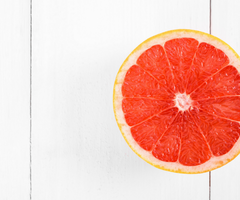 Author: Lily Mazzarella
Author: Lily MazzarellaThe dirty world of cleaning products –
Chemicals used in "air care" and cleaning products are receiving much-deserved scrutiny—in California, bill AB 708 has been introduced: it calls for new labeling regulations and full transparency on products containing overtly toxic compounds that interfere with human health and development.
An interview with a representative from the Environmental Working Group was on KQED Forum discussing this issue with my favorite radio smart guy, Michael Krasny. Interesting and disturbing questions arose, including: bioaccumulation, lack of legislation around proper labeling, and the impact of using these chemicals in combination (toxicity guidelines are set for solo chemicals, while in practice they are never used in isolation—a terrible synergy can result that in fact has been studied). Many of the most toxic products cited are commonly available at dollar stores, and are used by commercial and house cleaning companies, exposing low income workers and families disproportionately.
So how do we know what to use? The Environmental Working Group's Guide to Cleaners offers useful information, though there are a few points where I disagree with them.
For example, the more sensitive among you will want to avoid Mrs. Meyer's products even though they are recommended by the EWG: these products are beautifully packaged and well-marketed, and purport to be all-natural. And while many of their ingredients are truly non-toxic, most of their products DO contain SYNTHETIC AROMACHEMICALS, which can cause headache, sore throat, malaise, brain fog, and environmental illness in susceptible individuals.
What about Method? This popularly available "green" line is now owned by Belgian company Ecover, which started out with a mission to create a phosphate-free cleaner (phosphates cause problematic algae blooms in run-off that threaten waterlands). They have fantastic practices—and offer a real model of sustainability. Their LEED-certified factory building boasts passive heating and cooling, company-wide composting, and starting this year, all plastics used in production will be recovered from the oceans. Method got its start with sleek packaging and simple formulas; however, they continue to color them with synthetic dyes. Hmm. Is that really necessary? While perhaps not overtly toxic to us in this form, there are certainly environmental concerns about large-scale production of any synthetic colorant.
So where do we start? Proceed directly to the EWG's Hall of Shame and bring any offending products you might have under your sink to your local hazardous waste disposal site (dumping them down the drain or toilet means they end up in groundwater). This part of the guide takes note of "greenwashing" and lists some cleaners we had thought of as natural—like CitraSolv. Which, it turns out, contains formaldehyde! Just put mine in the chemical waste pick up box!
I know that replacing all your personal and household products can be overwhelming, and expensive! So go season by season to switch out products that are toxic to you and/or the environment.
This Spring, cleanse your home of anything "spring scented".
Focus on truly greening your LAUNDRY, and opt out of the scented detergent/dryer sheet racket—which contain some of the most toxic chemicals in your home. Dryer vent research by University of Washington professor Dr. Anne Steinemann produced chilling results. When scented detergents and dryer sheets are used, over 25 chemicals are volatilized and released through the vents, into our homes, or out onto our sidewalks. Among these chemicals are acetylaldehyde and benzene, two recognized carcinogens for which there is no safe exposure level.
As Dr. Steinemann (who studies scented chemicals, air quality, and their effect on human health) puts it: "If they're coming out of a smokestack or tail pipe, they're regulated, but if they're coming out of a dryer vent, they're not." To learn more visit her research project's website.
To avoid static cling, use these adorable wool balls that reduce dying time and keep your clothes from sticking together. They actually work! If you're feeling ambitious, you can make your own. Target sells a plastic/rubber version for under $5—but that plastic ends up somewhere, most likely a landfill or ocean.
Next in the toxic trash heap: "scent sticks", those spaghetti-like projections found on the backs of many toilets these days, emitting unctuous scents. These are rarely truly natural (though they claim to be), and many synthetic aromachemicals are neurotoxins. Some are known endocrine disruptors, while others are associated with increased risk of asthma and are known respiratory irritants. Do your children and pets a favor and rid your home of these. For sketchy bathroom closets and basements, check out Kanberra, an amazing tea tree oil-based product we use at Farmacopia.
If you're going to make your own products, remember that "all natural" isn't necessarily "all safe". It's important to properly dilute essential oils, for example, and avoid use of certain of them around babies and pets. For great home cleaner recipes using everyday ingredients such as vinegar, castile soap, lemon oil and baking soda, you can download a free e-book at this wonderful herbal resource site.
For more spring cleansing tips, download our Happy Liver Detox guide.
(Free for a limited time)

